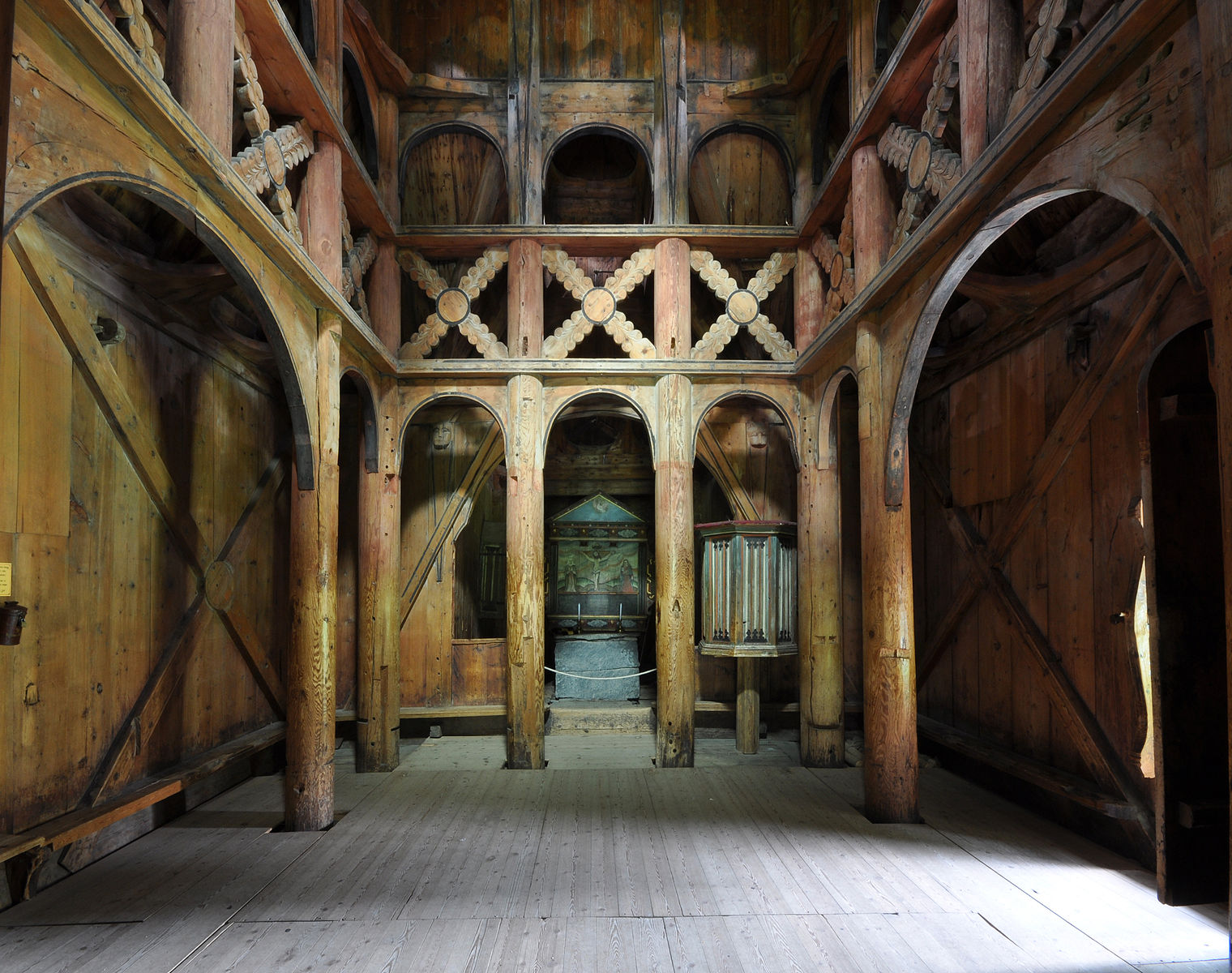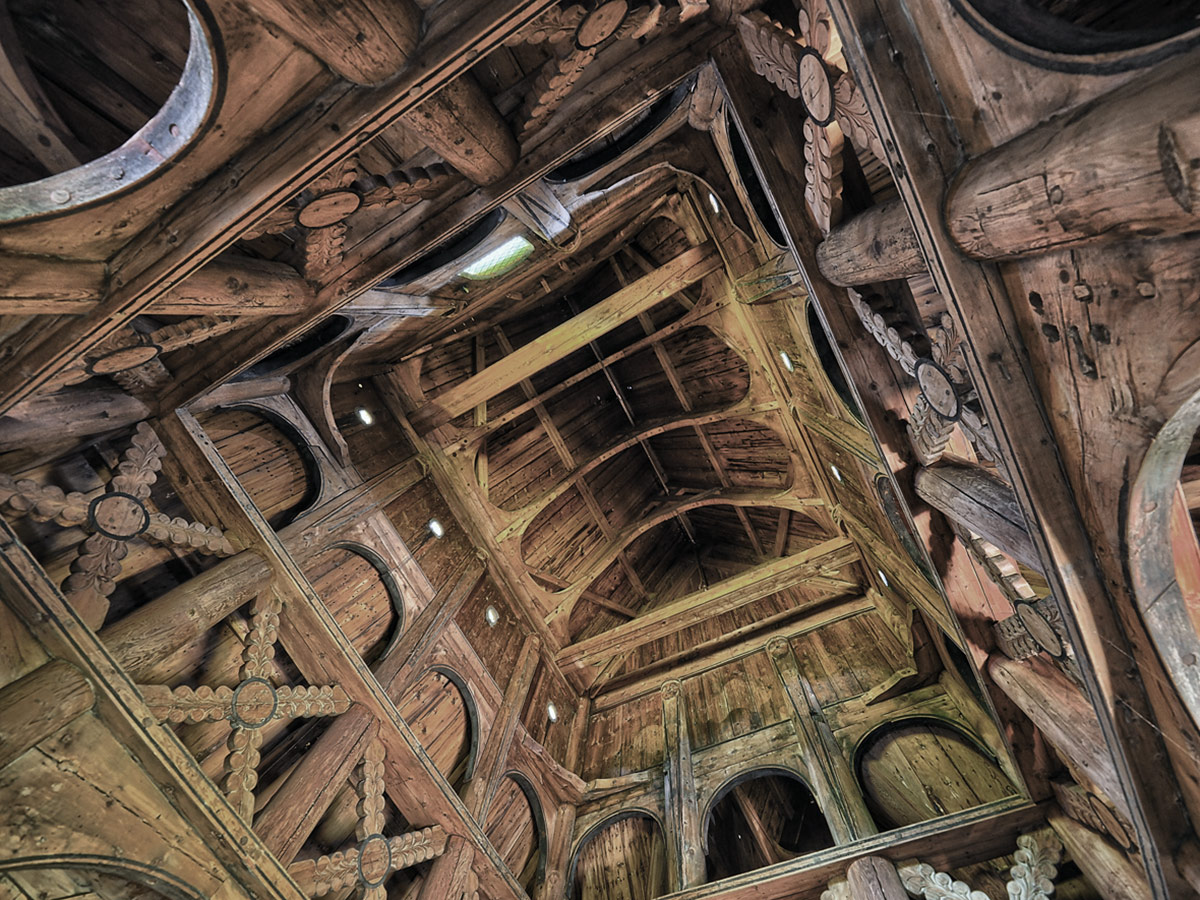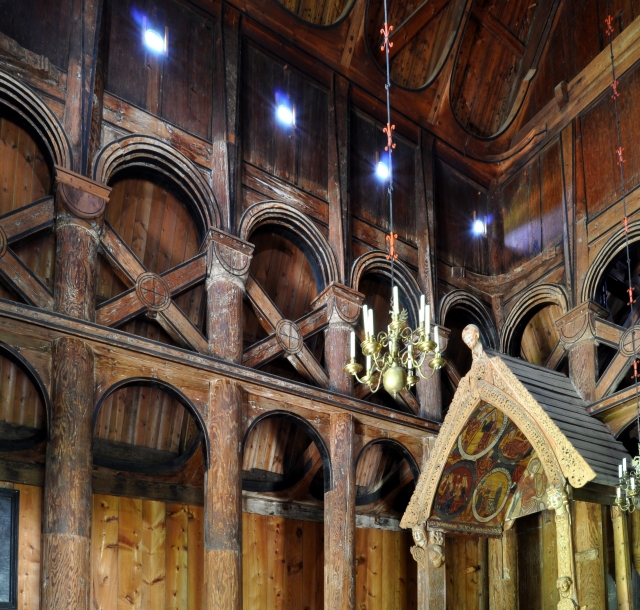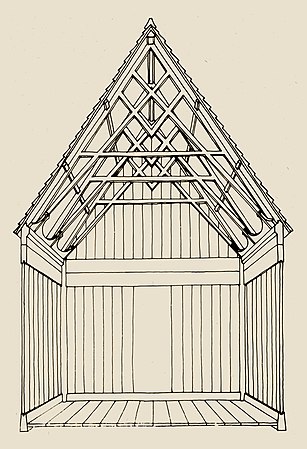Borgund Stave Church in Borgund, Lærdal, is one of Norway’s most visited stave churches.


It is now common to group the churches into two categories: the first, without free-standing posts, often referred to as Type A; and the second, with a raised roof and free-standing internal posts, usually called Type B.
Every piece is locked into position by other pieces, making for a very rigid construction; yet all points otherwise susceptible to the harsh weather are covered.
Single-nave churches in Norway: Grip, Haltdalen, Undredal, Hedal, Reinli, Eidsborg, Rollag, Uvdal, Nore, Høyjord, Røldal, and Garmo.
Church with a raised roof, Type B
Plans of Type B churches
- Håkon Christie drawing of Borgund Stave Church.
- G. A. Bull drawing of Borgund Stave Church.
Stave churches were once common in northern Europe. In Norway alone, it was thought about 1000 were built. Only 29 stave churches have survived in Norway. Most of these were built between 1150 and 1350. Stave churches were particularly common in less populated areas in high valleys and forest land, and fishermen’s villages on islands and minor villages along fjords.
RINGEBU STAVE CHURCH
I chose this stave church as my grandfather Sven Strande came from Ringebu and the Gudbrandsdalen Valley. He emigrated to the Maple Creek area of SW Saskatchewan in 1910.
 is It is a parish church of the Church of Norway. The brown, wooden church was built in a stave church design around the year 1220 using plans drawn up by an unknown architect. The church seats about 300 people. Dendrochronological dating of the logs used to build this church shows that the logs were cut in the 1190s.
is It is a parish church of the Church of Norway. The brown, wooden church was built in a stave church design around the year 1220 using plans drawn up by an unknown architect. The church seats about 300 people. Dendrochronological dating of the logs used to build this church shows that the logs were cut in the 1190s.
Around the year 1630, the master builder Werner Olsen (ca. 1600–1682) began a large expansion and renovation project on the church. The nave was enlarged by adding a transept wing to the north and south, creating a cruciform floor plan. A new central tower was constructed on the roof over the central part of the nave. The church was painted in 1717, but only the lower half of the walls were done since the ceiling at that time was lower.
BORGUND STAVE CHRUCH 

HOPPERSTAD STAVE CHURCH







